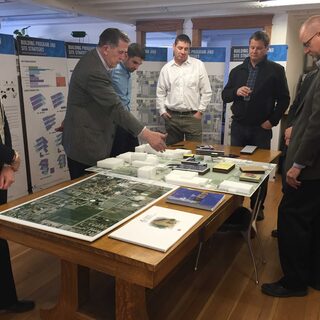Tradeline's industry reports are a must-read resource for those involved in facilities planning and management. Reports include management case studies, current and in-depth project profiles, and editorials on the latest facilities management issues.
Latest Reports
Congress Moves to Increase NIH Budget; Secure Indirect Cost Recovery
There are positive signs that funding for scientific research will not only be maintained, but will once again increase. Earlier this month, the Senate Appropriations Committee overwhelmingly approved $36.1 billion for the National Institutes of Health for the upcoming fiscal year. If approved intact, it will mark the third consecutive year that the NIH receives a $2 billion increase. The House Appropriations Committee already approved a $1.1 billion increase.
Equipment-Driven Planning for Capital-Intensive Academic Research Facilities
The University of Massachusetts Amherst (UMass Amherst) recently completed the construction and fit-out of their new Life Science Laboratories after receiving a $95 million grant from the Massachusetts Life Sciences Center (MLSC)—a quasi-state agency dedicated to growing the state’s life sciences industry. The new interdisciplinary research wing features state-of-the-art equipment and core resources that will be shared across multiple research teams and industry partnerships. While the new core labs were built into a pre-existing shell with an open floorplate and operational MEP, the final design was driven by the cost-intensive equipment list. Since the agency grant designated a specific amount of funding for the equipment, the type of equipment was known but exact model and vendor was not known before many of the other design and programming decisions were made.
Montana State University Changes the Way Engineering Students Are Taught
Inspired by the pioneering vision of alumnus Norm Asbjornson, Montana State University is changing the way engineering students are taught by providing a hands-on active learning environment that fosters collaboration across multiple disciplines and puts science on display. Construction of the three-story, 110,000-sf building began in December 2016, after a comprehensive planning and design stage that spanned 28 months. The $38 million building, designed to anticipate and respond to emerging trends in education and industry, is slated for completion in November 2018, with the first classes taking place in January 2019. A $12 million parking garage will add 550 stalls.
The Future of Research Facility Design
Five years ago, Tradeline sought experts to predict the future—specifically, the future of research lab design and construction. Today, we take a look back at those predictions, and gather some new ones, looking at trends in research programs and funding, and how those trends affect the decisions institutions are making when they build and renovate their laboratory spaces.
Choosing the Most Suitable Standby Power Source for Research Facilities
Bigger is not always better when it comes to generators and their distribution systems. Oversizing a piece of equipment has a domino effect on the infrastructure needed to support it and the square footage it occupies, as well as capital, operating, and maintenance costs, all of which cut into funding that could go toward research. Determining which generator is best for a research facility requires an understanding of many factors, including the current and projected loads, site parameters, risk assessment, flexibility requirements, and operating concerns.




